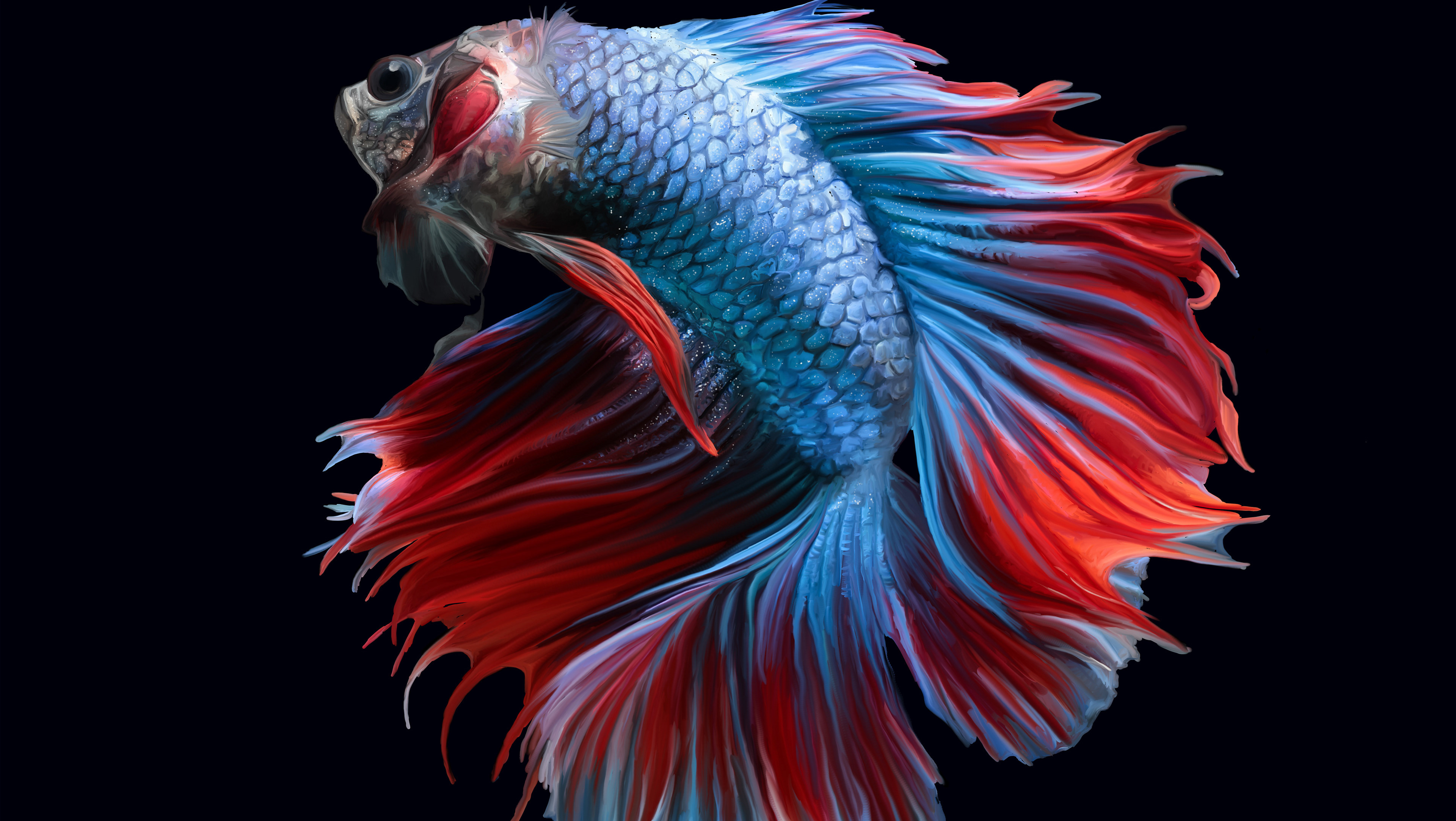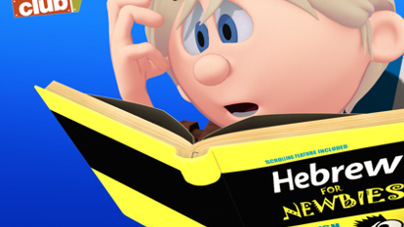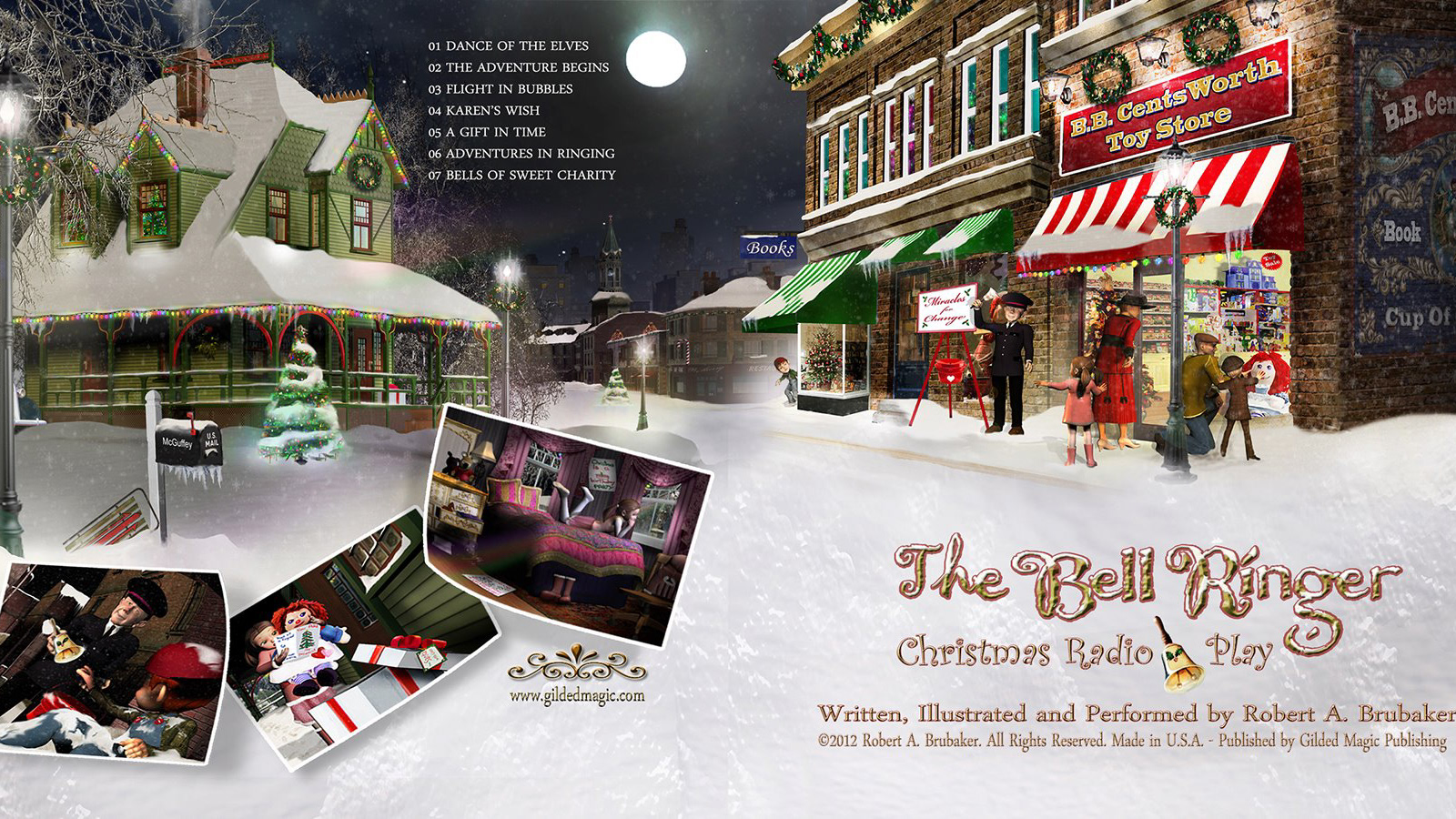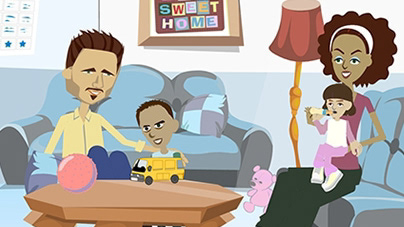Dragonfly Chase shows off the hybrid 2D/3D approach Robert took on "Cup of Glitter"
Robert A. Brubaker is the Creative Director at Gilded Magic Publishing and Producer at Resonant Image Studios. He’s an award-winning author/illustrator and seasoned multimedia producer who will make a directorial debut with his first 3D animated film, The Bell Ringer.
3D World: What do you do for a living?
3D World: What do you do for a living?
Robert A Brubaker: I’m the Creative Director at Gilded Magic Publishing and Producer/Director through our multimedia production arm at Resonant Image Studios. Gilded Magic Publishing specializes in children’s books and related media. As the Creative Director, I’m responsible for developing story ideas and concepts into their final form. The stories we produce usually begin as children’s picture books, long-form narratives or graphic novels. Some of our stories, like our award-winning Cup of Glitter, are scheduled to become a series of books while others, like The Bell Ringer, are slated for production as animated films, interactive apps and games.
The Bell Ringer is Robert Brubaker’s new venture into animation
3D World: At what point in your life did you make the decision that that’s what you were going to do?
RB: My journey into 3D animation and visual effects started on a Christmas Eve trip to the cinema. I watched Star Wars for the first time.
At that point most of the science-fiction films I had seen relied heavily on suspending your disbelief as a viewer, rather than on quality. For me, seeing Star Wars for the first time was like being hit by lightning. I spent months of whatever spare time I had scraping together everything I could find on George Lucas and how he and his crew produced all that amazing imagery. The more I learned, the more I wanted to do ALL of their jobs!
While at The Ohio State University, I was lucky to take a couple of animation courses offered by Jeffery B. Light who has since had a phenomenal career at ILM and DreamWorks Animation. What I liked most about Jeff’s approach was how he challenged his students to experiment, to think on their own, and to innovate beyond known methodologies. Everything from traditional cell animation techniques to slit-scan animation (famously used for the Superman titles and time warp sequence of 2001, A Space Odyssey) to creating travelling mattes on the Battelle/Mitchell computer assisted and Oxberry animation stands that Jeffery Light had set up for our department.
After graduating with a Fine Arts degree, I began cutting my teeth on 3D animation and VFX for industrial films. Later, I was able to afford my first DEC Alpha server with a Matrox Capture Card, Lightwave 3D, Elastic Effects and InSync Razor loaded on the hard drive to produce my own digitally created visual effects and animation.
In 2005 I met my wife, Sherry, who was beginning a new career as a children’s book writer. Sherry had just finished her first story, Cup of Glitter, and needed an illustrator to help bring her characters to life. Wanting to make an impression, I volunteered – pouring everything I had into the creation of her first book. What resulted was a children’s picture book that became a 2011 USA Best Book Award Winning Finalist and a 2011 International Book Award Winning Finalist. So began our venture into publishing and my renewed love for 3D Character Design and animation.
Steamboat Delta was produced entirely within Vue xStream, and was Robert’s first experience with the software
3D World: From where do you draw inspiration?
RB: I find inspiration in a variety of sources; music, light and shadow, everyday items, history, classical and modern architecture, art, nature, life cycles, aged materials, people from different cultures and animals. The trick is to look at things from an unusual angle or perspective. I’ll often experiment with the scale, colour and texture to see what results.
3D World: What is the most enjoyable project you have worked on so far in your career and why?
RB: Working with my wife on Cup of Glitter was the most enjoyable project. Sherry provided the kind of freedom most artists would envy. Once the decision was made to approach the illustrations using a hybrid 2D/3D approach, Sherry would offer her suggestions on how she imagined each of the scenes in her story, and then she would let me loose on the graphics. Most of the time spent was hand drawing each of the animals and insects on a huge 20x30in digital canvas.
3D World: What 3D tools and techniques do you use on a day-to-day basis?
RB: Photoshop is my ‘Swiss Army Knife’ for illustrating, compositing, creating highly detailed UV maps and matte paintings. I use Lightwave 3D for most architecture, vehicle and character designs. Maxxon Body Paint 3D is then used for texturing.
For more complicated organic designs I sculpt with Pixologic ZBrush. E-on Software’s Vue xStream is my favourite tool for creating environments and atmospheres. To compose travelling mattes, motion graphics and special effects, I typically use Photoshop and After Effects. I’m currently working to include Houdini as part of my repertoire.
For quick mockups, storyboarding and background characters I may license off-the-shelf models and render those in Daz Studio Pro or bridge them over to Vue- xStream where characters will interact more with the environments. For films I try to stick to creating original character designs or farm out some of the work when I’m under a time crunch. Rigging and animation is done primarily in Lightwave 3D.
3D World: What’s your favourite 3D package?
RB: Mostly due to my familiarity with the product I’d have to say Newtek Lightwave 3D and related plug-ins. However, I’m looking forward to joining those who use Maya, Nuke and Houdini.
3D World: What’s your favourite film?
RB: For sentimental reasons I have to say Star Wars because of its heavy influence on my decision to career in this industry. But as I begin preproduction for The Bell Ringer, my first 3D animated film, the moments that will most influence me are the soft pastel lights of Pixar’s Ratatouille, the bright colors in Finding Nemo, the touching climax of Toy Story 3, the action sequences of DreamWorks’ How to Train Your Dragon, the lighting and environments of Image Movers Digital/Disney’s A Christmas Carol and all those funny moments in the Shrek films that kept audiences laughing long after the credits rolled.
3D World: What advice can you give for aspiring 3D artists looking to break into the industry?
RB: What I say is that it pays to get really good with the tools you have at your disposal. Although the interface and program options can vary from program to program, (with a few exceptions) most of the basic processes and workflows will usually translate from one animation program to next.
There are many programs that can be downloaded at no charge. If you can’t afford Adobe Photoshop, GIMP is a nice free alternative. If you want to learn animation, but can’t afford to buy Lightwave 3D or Maya licences, start with Blender. If you want a more painted look for your images but can’t afford Corel Painter, use Art Rage. There’s a wonderful community of users and artists out there who are ready to support you too.
Always be prepared to learn something new. Consider that when you land your dream job at Disney, Pixar or DreamWorks etc, you will likely work with proprietary software designed by in-house developers. This means training. If you’re not interested in learning new technology, this is probably the last business you should consider for a career.
3D World: Please could you share a technical ‘secret’ or top tip with us on how you work?
RB: Study photography and film production and you will have a real advantage going into 3D work. There is so much about photography and cinema that naturally translates to the world of 3D.
3D World: If you have any comments on how the industry has changed since you first started, that would be great.
RB: Today the digital technology has totally revolutionized the film production and publishing industries. High Definition 3D cameras and a plethora of digital recording methods are quickly becoming the norm, along with 3D techniques for animation, related programs and downsized computers.
Publishing companies have had to change their business model due to the revolution of e-readers vs. printed books. While some jobs have died with old technology, new jobs have cropped up in their place. In either business you have to make a conscious effort to keep up with the latest developments or your career path will become very short.
Posted on Wednesday, January 16th, 2013 at 2:00 pm under Artwork, Showcase. You can subscribe to comments. You can leave a comment, or trackback from your own site.









